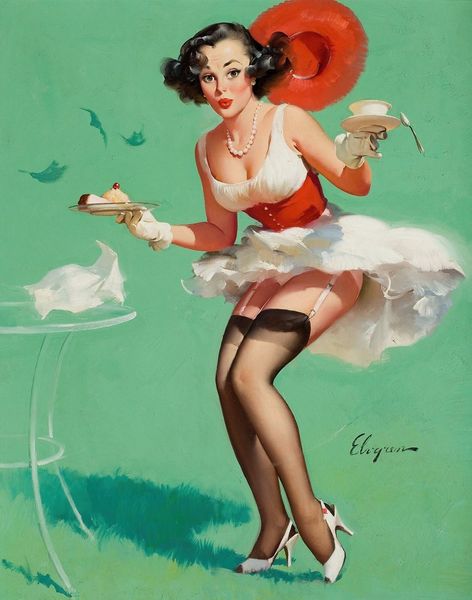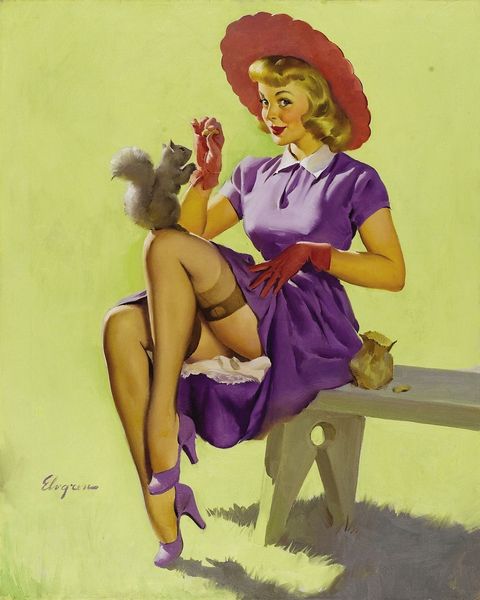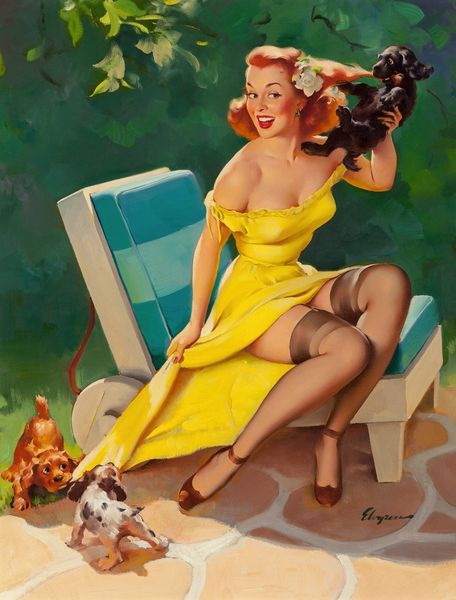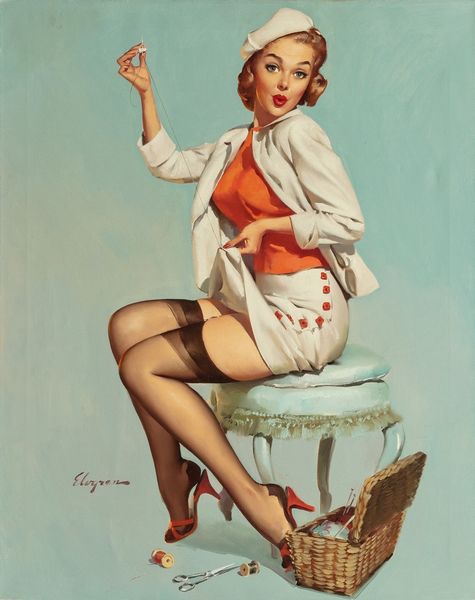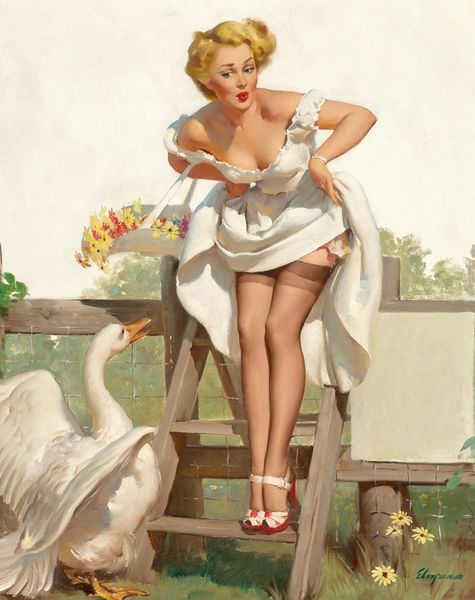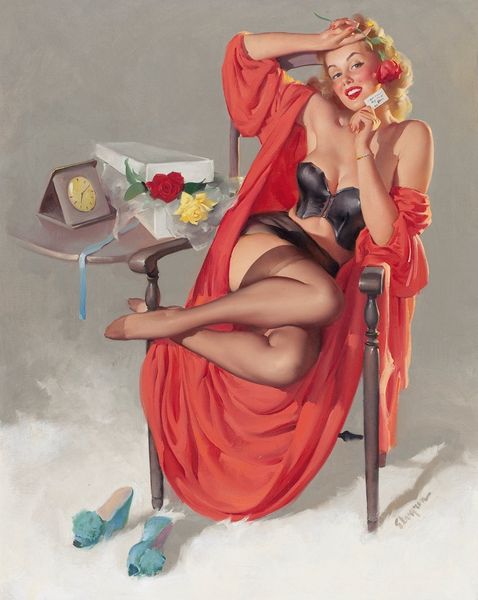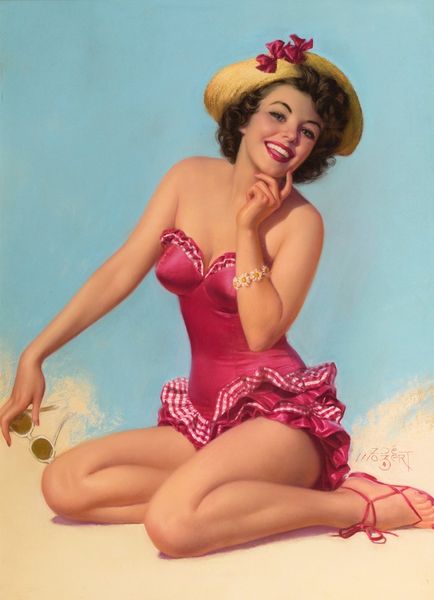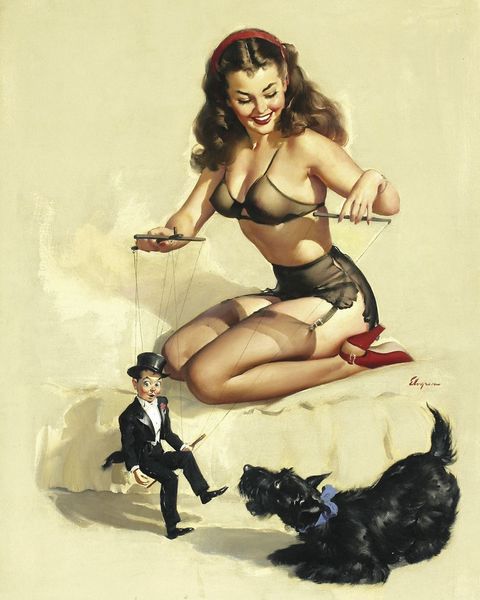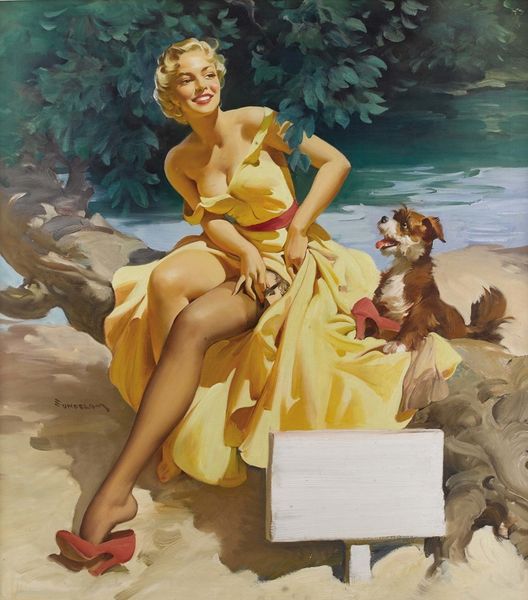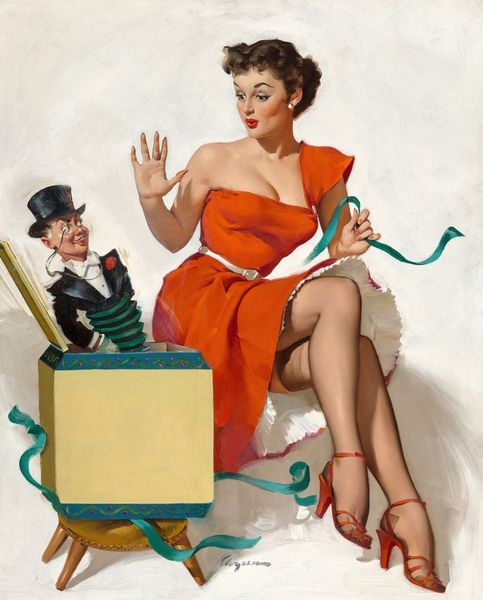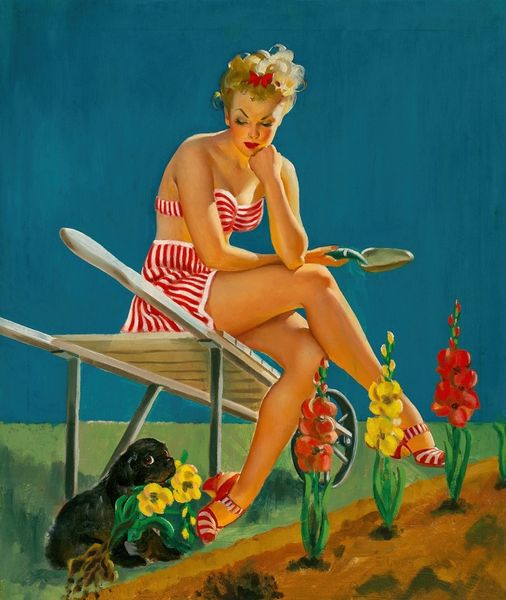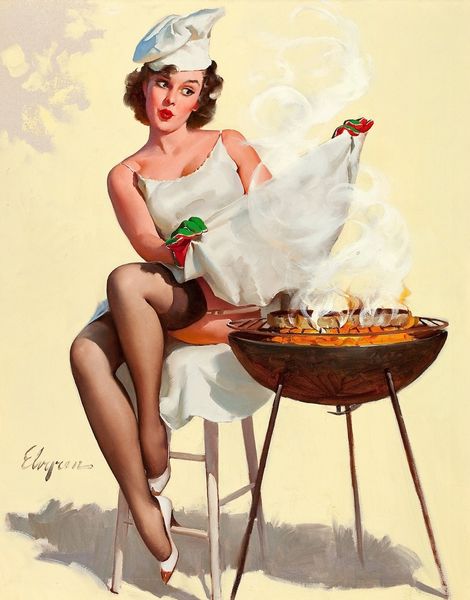
painting, oil-paint
#
portrait
#
painting
#
oil-paint
#
figuration
#
oil painting
#
animal portrait
#
portrait drawing
#
genre-painting
#
portrait art
#
realism
Copyright: Modern Artists: Artvee
Curator: Gil Elvgren’s “Squirrely Situation, calendar illustration,” created in 1969, is a fantastic example of his pin-up style work. Editor: The painting strikes me as overtly posed and self-conscious; there's a tension between its realism and artificiality that makes me feel uneasy. Curator: Certainly. Let’s consider the materiality of the work: oil paint on, presumably, canvas or board. Elvgren was a master of airbrushing, which contributes to the smooth, almost photographic quality. This reflects mid-century mass production; calendars, magazines – images produced and consumed widely. Editor: Absolutely. I think we can examine this through the lens of the male gaze. She’s presented almost as a commodity—her attire, her pose, the squirrels vying for her attention – all serving a very specific kind of consumer fantasy. Curator: Well, the calendar was commissioned, so there's a direct relationship between production and consumption here. It tells us much about the marketing of an ideal, using accessible materials. Consider the disposability too: these weren't meant to last like fine art. Editor: But does that impermanence lessen its impact? The image perpetuates stereotypes—of femininity, of desire. I think understanding its production is crucial, yes, but also vital to decode its lasting impact on perceptions and even on identity. And what does it say that such images are collected now, displayed as objects of…what? Nostalgia? Kitsch? Curator: A mixture, I expect. These works were essentially a form of industrial design. Examining the printing techniques, the paper quality, or even the ink composition provides tangible insights into the mechanisms of mass culture during that period. Editor: Yes, but to stop there ignores the complexities surrounding representation and objectification inherent in these works. The materials themselves tell only half the story. What are the social narratives at play here? What power dynamics? I suppose understanding these nuances provides another kind of insight. Curator: Indeed. This pin-up, initially disposable, opens up so many layers. I see it primarily as a testament to an era’s aesthetic and industrial capability. Editor: And I view it as a reflection of its socio-political climate. Different perspectives, connected by a shared artwork.
Comments
No comments
Be the first to comment and join the conversation on the ultimate creative platform.
